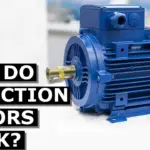Are you thinking about building something new? Maybe a warehouse, sports facility, or event space? There are many construction options to consider, including tension fabric buildings and traditional construction.
It can be challenging to decide which is best for your project. Both have strengths and weaknesses, and the right choice can make a big difference for your bottom line.
This article breaks down the pros and cons of fabric and traditional constructions. Read on!

Pros of Tension Fabric Buildings
Fabric structures, also known as tensioned membrane structures, use durable fabric membranes stretched over a sturdy frame. These buildings have gained popularity in recent years for their versatility and unique design.
Here are the benefits of tension fabric buildings:
Quick Construction
One major advantage of fabric structures is their speed of construction. They outpace traditional construction in speed and simplicity. Your space will be ready in days instead of months. Tension fabric building suits various needs, from short-term events to enduring storage solutions. They offer rapid deployment without compromising on quality or functionality.
Cost-Effective
Fabric structures cost less than regular buildings in terms of materials used and labor needed. If you want to build a dedicated workshop, fabric options can slash your expenses. The simple construction process cuts down on labor hours. Plus, you won’t need as much heavy equipment. These savings add up quickly, leaving more cash in your pocket for other projects or investments.

Low Maintenance
If you don’t want to spend more time and money on maintenance, tension fabric structure is your way out. The durable materials resist wear and tear, cutting down on repairs. This means more time to focus on what matters to you. Whether it’s a hobby shed or a business space, your fabric building stays in shape with minimal effort.
Customization
Fabric buildings can perfectly fit your vision. Do you want a bright blue workshop or a spacious white event hall? You got it. These structures adapt to your needs. You can customize the size of your equipment or guest list and shape it to fit your land or purpose.
Like Us on Facebook!
Cons of Tension Fabric Structures
Even with its many advantages, tension fabric buildings also have their disadvantages. They include:
Subscribe Us on YouTube!
Limited Insulation
Fabric buildings have a trade-off: temperature control. They might not keep heat in as well as brick or wood structures do. You’ll feel the chill more in winter and the heat more in summer, which can impact your comfort and energy bills. To avoid this, consider adding insulation layers or climate control systems to improve comfort.
Durability Concerns
Tensile structures are durable, but they have their limits. In severe weather conditions, they may not last as long as traditional structures—your local climate matters. A custom tension fabric building works well in mild areas but might struggle on a stormy coast, so think long-term when choosing.
Aesthetic Limitation
Fabric buildings have a distinct look. Some people love the modern, sleek appearance, while others prefer a more conventional style. Consider your surroundings and personal taste when deciding between traditional and custom tension fabric building. If you’re after a timeless charm, fabric structures might not be your first choice, but for a contemporary vibe, they could be perfect.
Pros of Traditional Construction

The advantages of conventional buildings include:
Durability
Traditional buildings stand the test of time. With regular care, these structures endure. You’ll find century-old barns still standing strong. Proper property maintenance keeps them strong. While newer options exist, traditional buildings offer unmatched longevity.
Energy Efficiency
Traditional buildings keep you cozy and save money on energy bills. Their solid walls hold heat in winter and cold air in summer. You’ll notice the difference in your energy bills. Add modern insulation, and your old-style home becomes a comfort zone. Over time, these energy savings add up.
Customization
You get endless design possibilities with traditional buildings. You can choose from various materials like brick, wood, or stone and add unique features like bay windows or turrets. Your home can reflect your style perfectly. With traditional methods, you’re not limited to pre-made designs. Your imagination is the only limit.
Resale Value
Do you want a building that holds its resale value? Traditional buildings are your perfect option. Your property can appreciate over decades. Buyers often seek classic charm and proven durability. Well-maintained traditional structures attract investors and homeowners alike.
Cons of Traditional Construction
Here are some of the cons of traditional buildings:
Time-Consuming
Traditional constructions take edges to complete. Many obstacles slow its progress, from unfavorable weather to unavailable materials. This means you’ll need temporary housing or storage. But patience pays off. You’ll get a solid, lasting structure that’s uniquely yours.
High Construction Costs
Taking conventional buildings off the ground requires considerable investment. Each expenditure will require more money, from pouring the foundation to adding the roof. Custom features? They’ll bump up the price even more. Your budget might stretch thin as the project progresses. When making your decision, weigh the long-term value against the initial expense.
Environmental Impact
Traditional materials often leave a big environmental footprint. They use up resources and waste a lot. The good thing is that you can opt for sustainable construction materials. For instance, you can look for tiles made from recycled materials or those that you can easily recycle. You’ll protect your home and the environment.
Conclusion
Choosing between tension fabric buildings and traditional construction depends on your specific needs and priorities. If you value quick construction, cost savings, and flexibility, tension fabric buildings might be the ideal solution for your project. However, if you seek durability, superior insulation, and a timeless aesthetic appeal, traditional construction is likely the better choice. By considering these factors, you can make a well-informed decision that aligns with your goals.






















